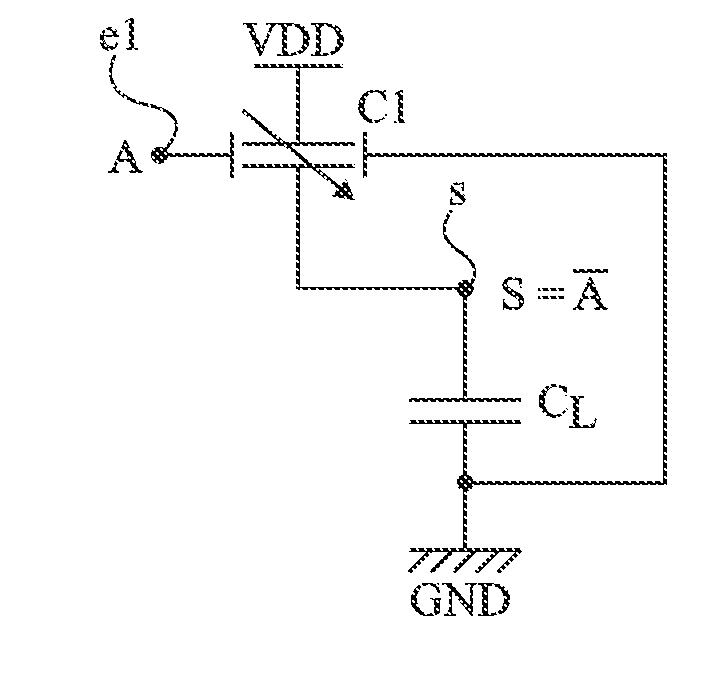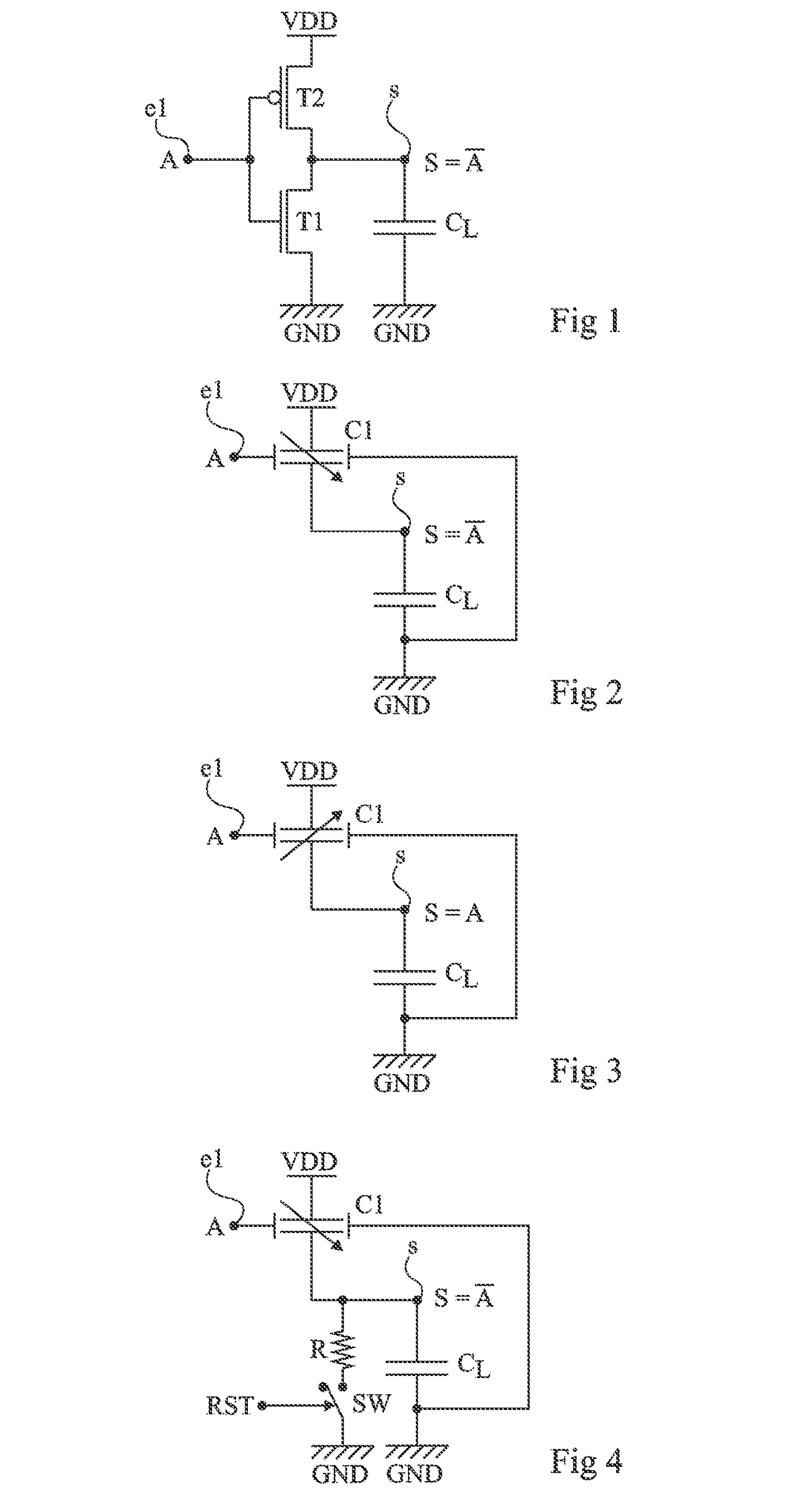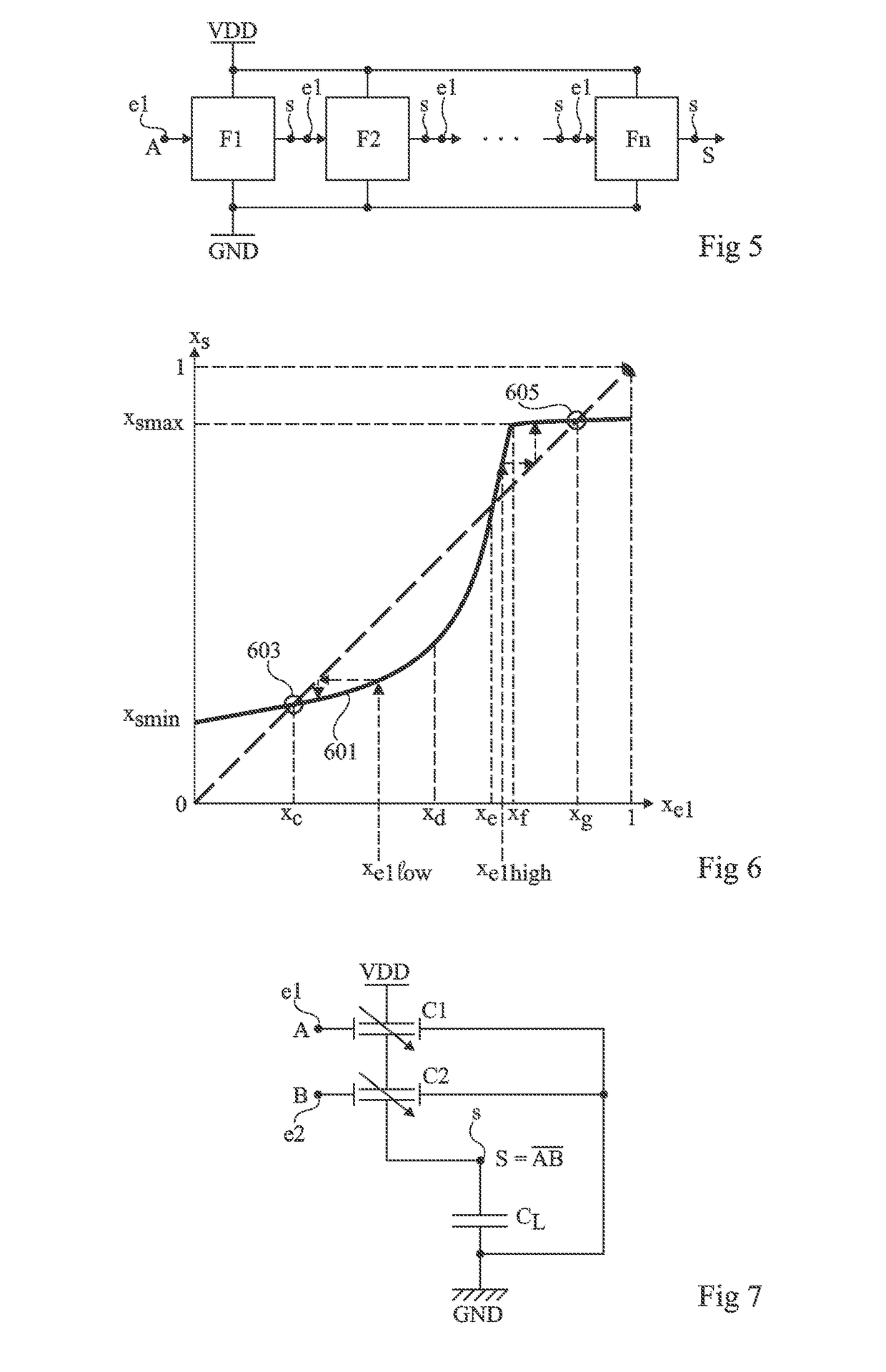Low power consumption logic cell
- Summary
- Abstract
- Description
- Claims
- Application Information
AI Technical Summary
Benefits of technology
Problems solved by technology
Method used
Image
Examples
first embodiment
[0056] the logic cells are powered with a DC voltage, and the logic carried out by the cells is a so-called static logic, that is, the state of the output signals of the cells are available at any time, and not only during a fraction of a period of a clock signal.
[0057]FIG. 2 is an electric diagram of an example of a logic cell according to the first embodiment. The cell of FIG. 2 is an inverting cell. This cell comprises a variable-capacitance capacitor C1 having two main electrodes separated by an insulating region, for example, a dielectric layer, and two control electrodes electrically insulated from the main electrodes and capable of receiving a control voltage to vary the capacitance between the main electrodes. Embodiments of such capacitors will be described in further detail hereafter in relation with FIGS. 16A, 16B, 17A, 17B and 18. In the example, capacitor C1 is a capacitor having a negative capacitance variation, that is, the capacitance of capacitor C1 takes a low valu...
second embodiment
[0087]FIG. 12 is an electric diagram of an example of a buffer-type adiabatic logic cell according to the The cell of FIG. 12 comprises the same elements as the buffer cell of FIG. 3, arranged substantially in the same way, but differs from the cell of FIG. 3 in that, in the cell of FIG. 12, DC power supply voltage VDD of the cell of FIG. 3 is replaced with a periodic variable power supply voltage Φ(t), supplied by a variable voltage source, not shown. Further, the cell of FIG. 12 comprises a hold and reset circuit comprising a variable-capacitance capacitor Cm, for example, identical to capacitor C1, having its main electrodes respectively connected to the node of application of power supply voltage Φ(t) and to output node s of the cell, and having its control electrodes respectively connected to output node s of the cell and to node GND.
[0088]FIG. 13 is a diagram illustrating the operation of the cell of FIG. 12. More particularly, FIG. 13 illustrates the time variation of power ...
PUM
 Login to View More
Login to View More Abstract
Description
Claims
Application Information
 Login to View More
Login to View More - R&D
- Intellectual Property
- Life Sciences
- Materials
- Tech Scout
- Unparalleled Data Quality
- Higher Quality Content
- 60% Fewer Hallucinations
Browse by: Latest US Patents, China's latest patents, Technical Efficacy Thesaurus, Application Domain, Technology Topic, Popular Technical Reports.
© 2025 PatSnap. All rights reserved.Legal|Privacy policy|Modern Slavery Act Transparency Statement|Sitemap|About US| Contact US: help@patsnap.com



